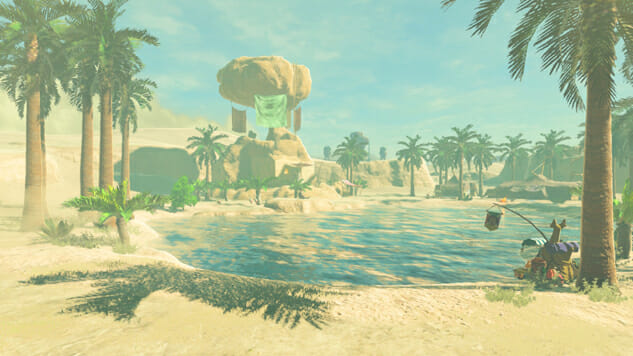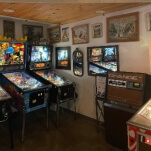How To Survive The Elements in Breath of the Wild

The latest Legend of Zelda game is a testament to Nintendo’s astounding attention to detail, especially when it comes to weather, temperature and environmental hazards. Breath of the Wild has about six basic climates and generally they’re specific to a region and its accompanying race, with a little overlap between. Gerudo, home to the all-female Gerudos, is hot during the day but cold at night. The greater Eldin area, where the Gorons live, is burning-hot. The Lanaryu region, where the Zora hail from, is cold and wet. Necluda is cold and snowy. Hebra and Tabantha, areas claimed by the Rito, are windy and snowy. And the mid regions, representing the Hylians (including Faron and Hyrule proper), are mild with frequent thunder and lightening storms (Akkala, in the upper northeast, has similar weather). These are not hard and fast rules but generally you should expect these conditions when traveling in those areas.
Survival in greater Hyrule depends on your ability to adapt quickly and have the proper tools on hand. Here are four tips for facing the challenges of the Hylian wilderness.
Don the appropriate garb
The best way to combat the elements in the many environments of Breath of the Wild is to wear the right thing. Fortunately, each region offers a specific outfit to help. On the path to Death Mountain is a questline that will award fireproof armor, in Rito Village you can purchase cold-proof attire, in Gerudo you’ll be given heat-resistant garb, and in Lanaryu, the Zora will give you a chestpiece that lets you swim up waterfalls (combating the area’s constant rain, which makes climbing difficult). Climbing Gear, which gives you a dramatic boost in grip and speed while scaling walls and mountains, can be found in three pieces at the Ree Dahee shrine of Dueling Peaks, the Chaas Qeta of the Necluda Sea, and the Tahno O’ah shrine east of Mount Lanayru. In the market at Gerudo Valley you can also trade in your gems for various element-resistant pieces of jewelry, which can help a lot (my Topaz, electricity-resistant earrings are my favorite and they’re very handy).
This mandate also includes what not to wear: never leave a metal melee weapon or bow equipped during a thunderstorm, which will get you electrocuted, and never leave an item of wood equipped on Death Mountain, or it will burn up.
Elixirs, meals and frozen foods
The second best way to survive the dangerous conditions in Hyrule is to carry elixirs and meals that offer boosts and resistance buffers. Elixirs are made by combining one monster part to four critters (frogs, butterflies, dragonflies). Meals are created by cooking food together at a pot. By using ingredients that have identical effects, you can put together items that powerfully overcompensate for and keep the elements at bay.










































